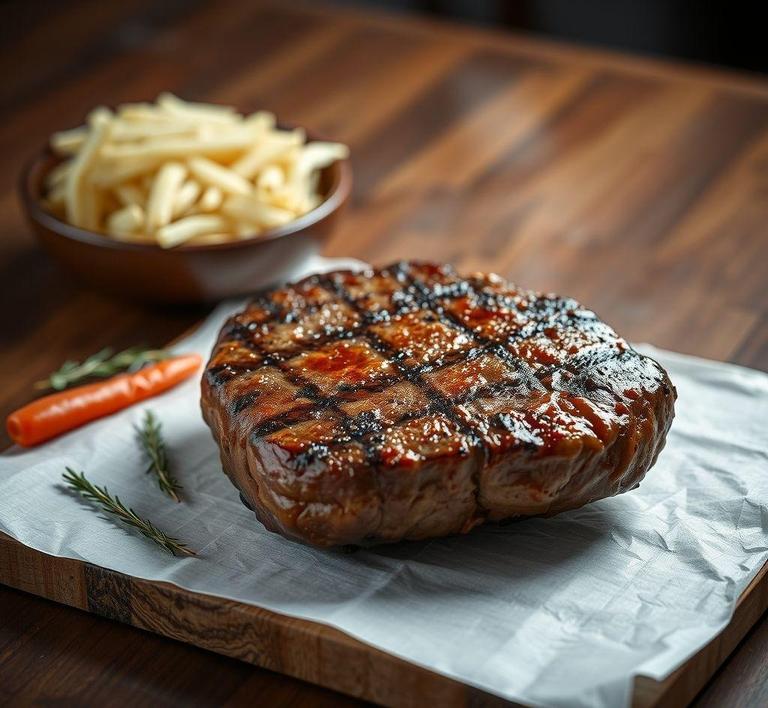Refreezing cooked beef is a topic that often leaves people a little uncertain. Whether you’ve cooked up a big batch and ended up with leftovers or you just want to extend the shelf life of your beef, knowing how to safely refreeze it is key. While it’s generally okay to refreeze cooked beef, there are a few guidelines to follow to ensure it stays safe and delicious. In this guide, we’ll walk you through everything you need to know, from proper storage techniques to the best ways to preserve flavor and texture, so you can make the most of your cooked beef without worrying about food safety.
Can You Refreeze Cooked Beef?

Refreezing cooked beef is a common dilemma many home cooks and food enthusiasts face. While the general guideline is to avoid refreezing food once it’s been thawed, there are circumstances where refreezing cooked beef can be done safely. The key to doing it properly lies in how the beef is handled both before and after cooking.
Cooked beef, like other types of meat, goes through various stages of temperature changes that affect its safety and quality. If you’ve cooked the beef and then refrigerated or frozen it, as long as it hasn’t been left at room temperature for too long, it can be refrozen. This is only true if the beef was properly thawed in the fridge, not left at room temperature for more than two hours, and hasn’t been repeatedly thawed and refrozen. Thawing beef at room temperature promotes bacterial growth, making it unsafe to refreeze or eat.
The best rule of thumb when it comes to refreezing cooked beef is to avoid it if it’s already been thawed and cooked previously, or if it’s been exposed to unsafe temperatures for too long. However, if it has been handled correctly and only thawed once (in the fridge, not at room temperature), then you can safely refreeze it.
How To Refreeze Cooked Beef?
Refreezing cooked beef involves several key steps to ensure the process is safe and that the beef retains as much quality as possible. Here’s how to do it correctly:
1. Cool The Beef Properly
Before you even think about refreezing cooked beef, it’s crucial to cool it down quickly to avoid the growth of bacteria. After cooking, let the beef rest at room temperature for no more than two hours. If the ambient temperature is particularly warm (over 90°F or 32°C), reduce this window to just one hour. Once the beef has cooled, place it in the refrigerator to continue cooling before freezing.
2. Wrap The Beef Securely
To avoid freezer burn and maintain the quality of the meat, wrap the cooked beef properly. Use airtight containers or heavy-duty freezer bags. If you’re using bags, try to remove as much air as possible to prevent oxidation and moisture loss. Vacuum-sealing is an excellent option for preserving both texture and flavor. You can also wrap the beef in aluminum foil and then place it in a ziplock bag for extra protection.
3. Label And Date The Packaging
Label your containers or bags with the date of refreezing. This will help you keep track of how long the beef has been stored and ensure you use it within a reasonable time frame. Although frozen beef can stay safe indefinitely, its quality tends to deteriorate over time. A good rule is to consume the refrozen cooked beef within 2-3 months for optimal taste and texture.
4. Refreeze Promptly
Once the beef is properly packaged and labeled, place it in the freezer as soon as possible. The faster the beef is frozen, the better it will maintain its texture and flavor when thawed again. Avoid refreezing the beef if it has already been sitting in the fridge for more than 3-4 days, as this increases the risk of bacterial growth, even if the meat was previously frozen.
5. Thawing Before Reheating
When it’s time to use the refrozen cooked beef, thaw it in the refrigerator overnight rather than using a microwave or leaving it at room temperature. This will keep the beef in a safe temperature range, ensuring that it’s reheated properly without compromising safety or taste.
Quality Impact
While refreezing cooked beef is generally safe when done correctly, there is an inevitable impact on the meat’s quality. Freezing and thawing meat changes its texture due to the formation of ice crystals. These crystals can rupture cell walls in the muscle fibers, leading to a change in texture, making it less tender once reheated. Here’s a breakdown of what to expect in terms of quality:
Texture Changes
When beef is frozen, ice crystals form and can cause the fibers to break down. After refreezing and reheating, the beef may become tougher and drier compared to fresh or properly stored cooked beef. This is especially true for leaner cuts like flank steak or sirloin, which are more prone to drying out.
Moisture Loss
The freezing process forces moisture out of the meat, and this loss is magnified when the beef is thawed and refrozen. Even with careful packaging, some moisture is inevitably lost, which can lead to a less juicy final product. For this reason, it’s a good idea to refreeze cooked beef that has been prepared in a sauce or with some liquid, as this can help maintain moisture.
Flavor Deterioration
Freezing cooked beef can cause subtle changes in flavor, although this is less noticeable than the textural changes. Beef that’s refrozen may lose some of its original richness and depth, becoming somewhat bland or metallic. This happens due to the breakdown of fats during freezing and thawing. Marinated beef or beef cooked with herbs and spices may maintain its flavor better than plain cuts.
Fatty Cuts Vs. Lean Cuts
Fatty cuts like brisket or ribeye can fare a bit better in terms of moisture retention when refrozen, as the fat helps to keep the meat moist. Lean cuts, on the other hand, will likely be drier after the refreezing process. Therefore, if you’re working with leaner beef, it might be better to plan for using it immediately after cooking, rather than freezing.
Refreezing cooked beef is entirely possible and can be done safely, but it requires proper handling and precautions to ensure both safety and quality. Always cool the beef rapidly and refreeze it within a safe time window, using airtight packaging to prevent freezer burn. However, it’s important to remember that the quality of the beef will likely be compromised with refreezing, especially in terms of texture and moisture. Refrozen beef can still be tasty and safe to eat, but it may not have the same juiciness or tenderness as when it was first cooked. Therefore, it’s best to consume refrozen cooked beef within a few months and to use it in dishes where texture changes won’t be as noticeable, such as stews or casseroles.
Is It Safe To Refreeze Cooked Beef?
When it comes to food safety, especially with meat products like beef, the rules can seem a bit tricky. You might find yourself asking whether it’s safe to refreeze cooked beef once it’s been thawed. The short answer is: yes, it is technically possible, but there are several important caveats and precautions to consider.
The process of freezing and thawing food can allow harmful bacteria to grow, especially if the meat spends a long time at unsafe temperatures during thawing. When you refreeze cooked beef, you’re essentially repeating the process of freezing and thawing, which can cause the beef to deteriorate in both taste and texture. However, if handled properly, refreezing cooked beef is not inherently unsafe.
The key factors to ensure safety involve the temperature of the beef when it’s first thawed and how long it has been at room temperature. If you’ve thawed the beef in the fridge (rather than on the counter), it will generally be safe to refreeze within 3-4 days of thawing. The same principle applies to cooked beef: if it has been sitting out for more than two hours (or one hour in hot weather), it could have reached a temperature that allows bacteria to grow, which makes refreezing unsafe.
Refreezing cooked beef that’s been thawed in the refrigerator is far safer than refreezing beef that’s been left at room temperature, as the latter is a major breeding ground for foodborne pathogens like Salmonella, E. coli, and Listeria.
Signs That Cooked Beef Should Not Be Refrozen
Before you even think about refreezing cooked beef, there are several signs to watch out for. These signs will not only help you avoid refreezing potentially unsafe meat but also ensure that the beef maintains its quality.
- Off Smell or Sour Odor: Fresh beef should have a clean, meaty smell. If your cooked beef smells sour or rancid, it’s a clear sign that bacteria have started to break down the meat, and it should not be refrozen or eaten.
- Slimy or Sticky Texture: A slick or slimy layer on the surface of the beef could indicate the beginning of spoilage. Meat that feels slimy is often an indication of bacterial growth, which means it should not be refrozen or consumed.
- Discoloration: While some color changes in meat (like a slight browning from exposure to air) are natural, drastic discoloration-such as grayish or greenish hues-suggests that the meat has gone bad and should be discarded.
- Excessive Time Spent at Room Temperature: If your cooked beef has been left out at room temperature for more than two hours, it could be unsafe to refreeze. As mentioned earlier, the “danger zone” for bacteria growth is between 40°F and 140°F, and any beef that has been sitting at these temperatures for too long may harbor dangerous pathogens.
- Freezer Burn or Dryness: While not necessarily dangerous, freezer burn can make your beef unappetizing. If your beef is dried out or has visible freezer burn (patches of whitish discoloration), the texture and flavor will be significantly compromised upon refreezing.
Common Refreezing Mistakes
Refreezing cooked beef isn’t an everyday practice for most people, so it’s easy to make mistakes in the process. Here are some common errors that can affect both safety and quality:
- Refreezing Without Proper Packaging: One of the biggest mistakes is not properly wrapping the beef before freezing it. Without airtight packaging, beef can become exposed to air, leading to freezer burn. Always use heavy-duty freezer bags or vacuum-sealed packaging to preserve the meat and its moisture.
- Refreezing Meat Multiple Times: Every time you thaw and refreeze meat, you increase the chances of bacterial growth and further deterioration of quality. Ideally, cooked beef should only be frozen once. Each cycle of freezing and thawing breaks down the meat’s texture and can result in a mushy, dry texture when reheated.
- Thawing at Room Temperature: Thawing beef at room temperature rather than in the fridge is a huge safety mistake. Room temperature provides the perfect environment for bacteria to multiply, and refreezing beef that has thawed this way can be hazardous. Always thaw meat in the fridge or in cold water to keep it out of the danger zone.
- Refreezing Large Portions: While refreezing beef is possible, it’s better to do so in smaller portions. Large chunks of cooked beef take longer to freeze, which means they could spend too much time in the danger zone where bacteria multiply rapidly. Breaking it into smaller, manageable portions helps reduce this risk and ensures quicker and safer freezing.
- Not Considering Meat Quality: While it’s safe to refreeze cooked beef, doing so might degrade the quality of the meat. Each cycle of freezing can reduce moisture retention, making it less tender. If you know you’re going to freeze beef, it’s important to understand that this can change the texture significantly, especially if you’re refreezing multiple times.
Tips And Tricks For Refreezing Cooked Beef
If you decide to refreeze your cooked beef, here are some helpful tips and tricks to ensure that it stays safe and as tasty as possible:
- Cool Beef Quickly Before Freezing: The quicker you cool down your cooked beef before freezing, the better. The best practice is to let the beef cool for no more than two hours before placing it in the fridge to chill further. This minimizes the time it spends in the temperature danger zone.
- Label and Date Your Beef: When refreezing, always label your cooked beef with the date of freezing. This ensures that you can keep track of how long it has been in the freezer and avoid keeping it too long. Cooked beef generally stays good for 2-3 months in the freezer before it begins to lose its flavor.
- Portion Control: Instead of refreezing large chunks, divide your beef into smaller portions. This will make it easier to thaw only what you need, which also avoids the need to refreeze more than once.
- Use Freezer-Safe Packaging: Use high-quality freezer bags, vacuum-sealed bags, or airtight containers to store your beef. This prevents freezer burn, which can make the beef tough and dry. Be sure to remove as much air as possible from the packaging.
- Defrost Safely: When you’re ready to use the beef again, always defrost it in the refrigerator, not on the counter. This allows the beef to thaw gradually and ensures it stays at a safe temperature. If you’re in a rush, you can also defrost it in a microwave or by placing the sealed package in cold water, but these methods may impact the texture and quality.
- Reheat Thoroughly: When reheating refrozen cooked beef, ensure that it reaches an internal temperature of at least 165°F to kill any bacteria that may have developed during thawing. This is especially important for ground beef, which is more susceptible to bacterial contamination.
Conclusion
Refreezing cooked beef can be a convenient way to extend its shelf life, but it comes with its own set of risks and challenges. If done improperly, refreezing could result in unsafe meat or a less-than-pleasant eating experience due to texture and flavor changes. However, by following the right procedures-like cooling the beef quickly, using proper packaging, and avoiding multiple freeze-thaw cycles-you can enjoy cooked beef even after it has been frozen.
Always keep safety in mind: meat should only be refrozen if it has been stored correctly, hasn’t been out of the fridge for too long, and shows no signs of spoilage. If you notice any discoloration, odd smells, or changes in texture, it’s best to discard the beef. Properly handled, refrozen cooked beef can still be a viable option, ensuring that you reduce food waste and save time in the kitchen!

